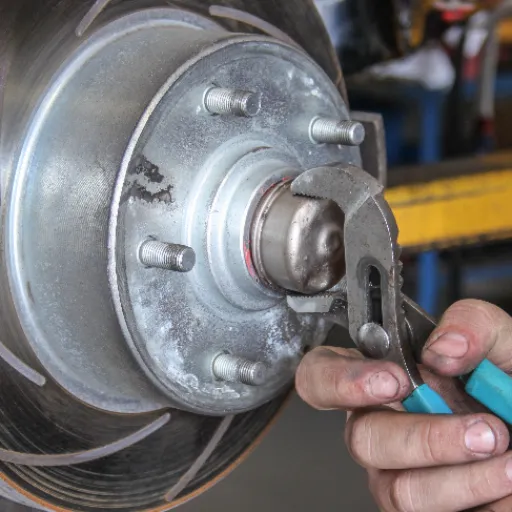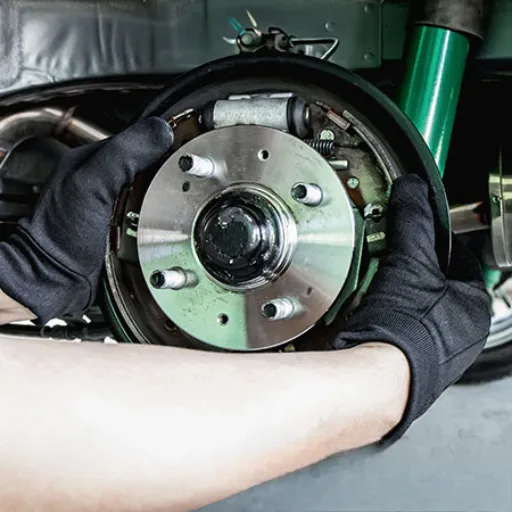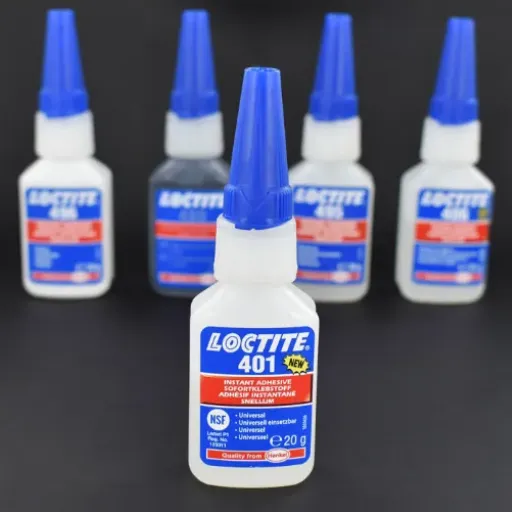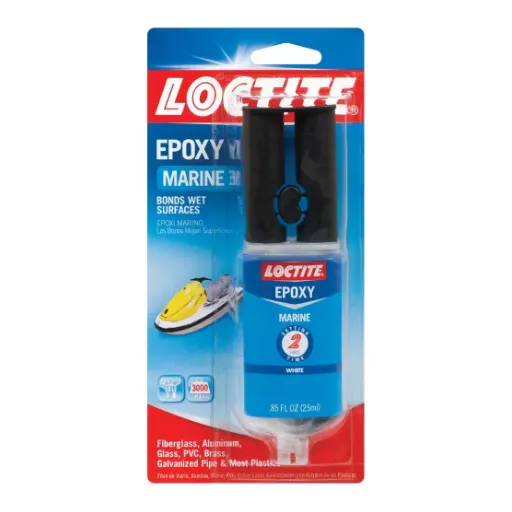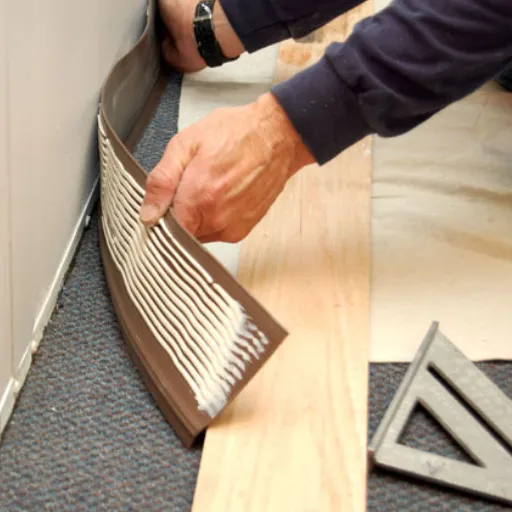Homeowners and handymen have a wide selection of adhesive products, but few others are as universal as super glue. It is easy to see why this glue has gained so much popularity—it is known for the strong bond it creates and how quickly it dries. However, this glue has also sparked debate over whether it affects health and even poses a threat to users—is super glue toxic? What are cyanoacrylate-based bonds and how are they applied carefully? These and other questions will be addressed in the present paper to provide a detailed explanation of how super glue works, the dangers it poses, and how it should be appropriately applied. You may use this adhesive every day and want to know what this glue is all about. Do not miss this chapter.
What is Super Glue?
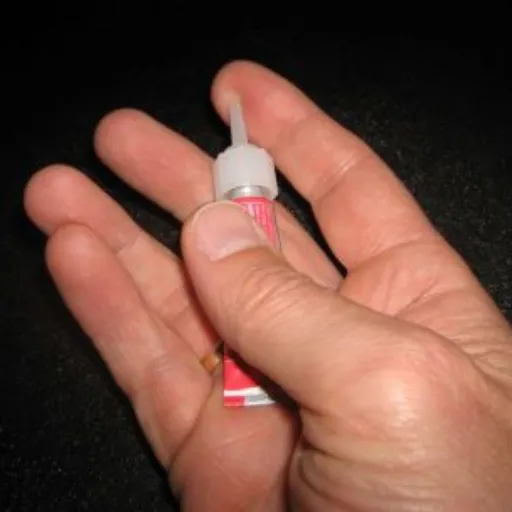
A super glue, or cyanoacrylate adhesive, is a fast-setting glue with strong bonding capability against wood, metals, plastics, and so forth. The glue sets almost instantly as it reacts with moisture in the air, forming a durable bond. Due to its versatility and ease of use, super glue is used for everything from household repairs to industrial applications.
Definition and Composition of Super Glue
The scientific term for super glue is cyanoacrylate adhesive. It is a fast-setting, high-strength glue made from a synthetic resin. The chemical nature of the adhesive relies mainly on cyanoacrylate esters, which in essence are reactive monomers that polymerize in the presence of even tiny traces of moisture. When applied, anionic polymerization sets the super glue in the presence of humidity, either on the surface or in the air, forming a firm bond between the two surfaces within a very short time.
Modern super-glue formulations may include additives to modify the performance characteristics. For example, one goal might be to increase flexibility; another, to reduce brittleness; yet another, to enhance bonding to certain materials. These improvements have made super glue bonds even stronger across a wide range of materials, including metals, plastics, ceramics, wood, and even some fabrics. Such versatility has made super glue a very reliable bonding agent for everyday household repairs, medical applications, and industrial applications.
Types of Cyanoacrylate Adhesives
Cyanoacrylate adhesives are divided into different classes, each suited for a specific use:
Ethyl Cyanoacrylate
This is perhaps the most familiar type, creating strong bonds for an array of materials, from metal and plastic to rubber and wood. This adhesive is highly versatile and used in both day-to-day household fixes and industrial applications.
Methyl Cyanoacrylate
Considered heat-resistant, this type is best suited for gluing complex materials such as metals and ceramics. It is used in situations where durability is required under heat or other forms of stress.
Alkoxy Cyanoacrylate
Because it is low-odor and blooms, alkoxy cyanoacrylate is chosen for applications where appearance and minimal whitening near the bond line are critical. It is, therefore, very common in electronics and medical device manufacturing.
Each type has its own qualities to meet the distinct demands of various industries and exact applications.
How Super Glue Works: The Polymerization Process
Cyanoacrylate adhesive superglue works through polymerization. Depending on moisture levels, the slightest trace of water in the air or on surfaces can trigger the adhesive monomers to react, linking them into long molecular chains. And the very same fast-bonding mechanism is what makes superglue dry incredibly quickly, with an immense strength of adhesion.
First, cyanoacrylate molecules are in the liquid state. They are highly reactive toward hydroxide ions, which are present in trace amounts in water. When they come into contact with water, the molecules undergo an anionic polymerization reaction, rapidly transforming them from their liquid state into hard plastic that lasts the test of time. It is an exothermic reaction because it releases heat.
💪 Strength of Cyanoacrylate Adhesives
The strength of cyanoacrylate adhesives stems from their ability to fill microscopic surface irregularities, thereby forming a very tight, secure bond. Research indicates that, depending on the surface and the type of cyanoacrylate, these glues have tensile strengths ranging from 1,000 to 4,000 psi. In industrial applications, high-strength cyanoacrylate formulations adhere to metals and composites with forces that can rival those of mechanical fasteners.
But polymerization itself depends rather strongly on environmental conditions. Humidity, temperature, and surface cleanliness affect the speed and quality of bonding. For instance, the optimal humidity range is 40-60%, whereas going higher might speed up the process but result in a weaker bond due to over-curing.
The polymerization chemistry behind super glue is one of the incredible quantum sciences that shall afford precision bonding affordably for the layman and excellent durability for industry.
Health Risks and Toxicity Concerns

⚠️ Important Safety Information: Super glue poses health risks and toxicity, particularly because cyanoacrylate fumes are released when it is applied. Cyanoacrylate fumes are irritants to the eyes, skin, and respiratory system, especially in poorly ventilated environments. Accidental skin exposure may cause burning or mild irritation; prolonged exposure may result in allergic reactions in sensitive individuals. But, accidental ingestion or misuse can lead to even serious health hazards. To substantially reduce its hazards, super glue should always be kept and used in well-ventilated areas, never allowed to come in contact with bare skin, and always stored away from children.
Potential Skin Irritation and Allergic Reactions
While known for its strong adhesive properties, super glue may pose hazards for sensitive skin types or people with pre-existing allergies. Recent data show that super glue might irritate your skin, turn it red, or even burn the affected area. Persons with allergic reactions might experience neuter symptoms such as swelling, itching, or dermatitis. According to experts, using protective gloves, along with immediate washing of contaminated skin areas and wiping with warm water and soap, can effectively reduce the risk of irritation. Besides this, one must become familiar with the items of their glue, and in the case of severe reactions, a doctor’s consultation is highly suggested. Henceforth, avoiding and proper handling remain the best options to prevent any unfavorable implications for one’s skin.
Respiratory Issues from Fumes
Here are the health effects of exposure to adhesive fumes: some may affect the respiratory tract, especially in poorly ventilated environments. Symptoms include:
- 🔹 Coughing and throat irritation
- 🔹 Shortness of breath
- 🔹 A feeling of tightness in the chest
Hence, exposure can be kept to a minimum by working in well-ventilated areas or wearing respiratory protection. If there is prolonged or recurrent exposure, the risk of severe respiratory disorders increases, and advice would be to minimize contact, including taking breaks in between. If symptoms persist or get worse, a doctor should be seen without delay.
Understanding Super Glue Toxicity: Facts vs. Myths
❌ Myth
Inhaling superglue fumes is harmless if exposure is brief.
✓ Fact
Even short-term inhalation produces respiratory discomfort in enclosed spaces according to the latest data.
❌ Myth
Super glue is completely harmless once it dries.
✓ Fact
On non-porous surfaces, it becomes inert. However, prolonged skin contact with the glue during drying may cause irritation or allergic reactions.
True, it sets really fast and bonds really firmly, but if you use it in a well-ventilated area, it’s rarely a toxicity issue. Using your common sense and being aware of the risk is probably the best way to dispel those myths concerning the safety of super glue.
Safe Usage of Super Glue

Ventilate
Super glue should be used in a well-ventilated area to prevent the inhalation of fumes that irritate the respiratory tract.
Avoid Skin Contact
To prevent arising of any possible side effects, wear disposable gloves or handle the glue with tools, avoiding any contact of the glue with skin for an extended period that might cause irritation or an allergic reaction.
Do Not Overapply
Only small amounts of super glue should be applied to prevent excess fumes or spills, ensuring safe and effective use.
Store and Dispose Properly
Keep the super glue stored away from children and pets in a cool, dry place. Dispose of the super glue containers when empty in accordance with local disposal regulations.
Best Practices for Using Super Glue Safely
✓ Work in an Open-Air Environment
Keep the environment well-ventilated when using super glue to avoid inhaling fumes that could irritate the respiratory system. Thus, the window should be kept open, or a fan should be running.
✓ Avoid Contact with the Eyes and Face
The glue should be kept far from the face; above all, away from the eyes! If it comes into contact with the eyes, wash thoroughly with water and seek medical attention immediately.
✓ Take Precautions
For an extra safety precaution, consider wearing safety goggles and rubber gloves when working with super glue.
✓ Avoid Mishaps
If your skin gets glued down, soak the glued area in warm water with soap for a while to loosen the glue. Then using something blunt like a nail file, separate the glued parts slowly. Never use anything sharp to do the job as it may cause injury.
✓ Do Not Mix with Other Chemicals
Never mix super glue with anything else—chemicals or otherwise, since this may very well lead to an undangrous reaction.
While adhering to these best practices, cheap gluing should ensure efficient use with safety, thereby reducing hazards.
Using Super Glue on Cuts: Is it Safe?
⚠️ Medical Consideration: In some situations, using a super glue for cuts can be safe, but it is not always an advisable method. Medical adhesives are intended solely for wound closure and are better suited for use on the skin. Superglue bought from stores contains chemicals that may irritate or cause allergic reactions, particularly on sensitive skin or open wounds.
If you are considering using it, make sure the cut is small, clean, and free of infection. Do not use super glue on deep cuts, burns, or on parts of the body where movement might reopen the injury and delay healing.
For serious injuries, it is always better to consult a medical expert.
Accidental Exposure: What to Do

In case super glue has accidentally bonded to your skin, do not try to pull or peel it off because it may result in injury. Instead, soak the affected area in warm, soapy water to soften the glue. Use the dull edge of a spoon or a fingernail to lift the glue off gently. For persistent spots, acetone or nail polish remover can help loosen the bond, but it should be applied with caution to avoid irritation. If glue gets in your eyes or mouth, rinse it with water immediately, and seek medical attention if necessary.
First Aid for Super Glue Exposure
🩹 Emergency Response Steps
If super glue gets on your skin, avoid forcibly removing it to prevent injury. Then immerse it in warm, soapy water for a few minutes to loosen the adhesive. Using a dull instrument, such as a spoon or your fingernail, carefully scrape off the glue.
If there are any remaining fragments, acetone or nail polish remover can be gently applied, bearing in mind that less irritation is better.
Should any unpleasantness occur by an accident—such as a smidge making its way into the eyes or perhaps mouth—wash immediately under plenty of running water and get yourself to a doctor without delay. Super glue is to be treated with the utmost respect.
Skin Contact: Removal Techniques
Preventing superglue from coming into contact with the skin and removing it properly are the keys to handling these situations. Based on new data and the experts’ own findings, the question arises: “Which is the safest method to remove super glue?”
- Soak in warm, soapy water: Immerse the affected area for 15-20 minutes to soften the glue safely and effectively.
- Gentle rubbing: Rub gently with a sponge or cloth, or even just with your fingertips, to pull off the glue a little at a time.
- Use acetone sparingly: A little acetone-based nail polish remover can be applied with a cotton swab to stubborn glue residue, using it sparingly to avoid skin damage.
- Moisturize afterward: Apply moisturizer to help calm any irritation or dryness.
- Seek medical advice: If the glue has bonded to a sensitive surface or the case is more serious, it is strongly advised to seek medical advice.
Eye Exposure: Immediate Actions
🚨 CRITICAL: Emergency Eye Care
If super glue has come into contact with the eye, immediate rescue is essential.
- ❌ Do not try to separate the eyelids or pry the eye open forcefully
- ✓ Keep flushing the affected eye with lukewarm water for at least 15 minutes to help loosen the glue
- ✓ Blink several times to maintain natural lubrication
- ❌ Avoid any chemical or mechanical method of glue removal
- 🏥 If the glue fails to loosen or vision is impaired, immediate professional medical assistance must be obtained for its removal
Ingestion: When to Call Poison Control
An accident can involve ingesting an adhesive or glue. In such cases, time is of the essence.
- ❌ If instructed otherwise by a healthcare professional, do not induce vomiting
- ✓ Rinse out the mouth thoroughly with water to minimize any irritation
- ⚠️ Most household glues indicate their non-toxicity on their labels, but if symptoms such as nausea, vomiting, or difficulty breathing arise, they should be taken seriously
📞 Call Poison Control
1-800-222-1222
Or your local emergency number for assistance
Be ready to describe the product ingested, including its name and any warnings on its label, as this may help determine the best course of treatment. Store glues out of the reach of children to prevent accidental ingestion.
Alternatives to Super Glue
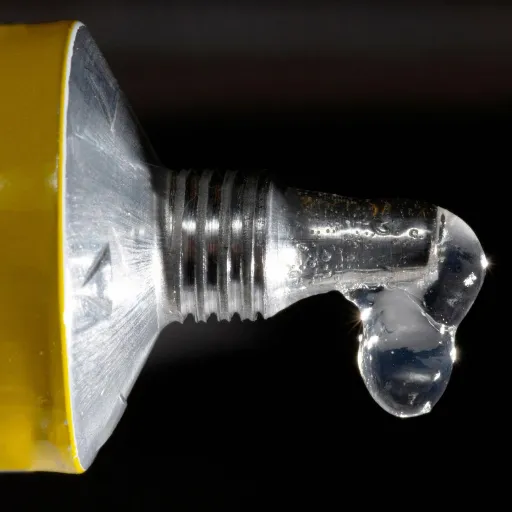
Instead of going for super glue, one alternative listed here should work, depending on your need:
Epoxy Resin
This is useful for heavy-duty repairs, offering strong bonding and durability.
Hot Glue
Versatile for making crafts and working with lightweight materials.
Wood Glue
This is the one for woodworking projects and bonding wooden surfaces.
Rubber Cement
Great for paper, fabric, and flexible materials.
Construction Adhesive
Suitable for larger projects that require heavy materials such as metal, concrete, or wood.
Hence, since all alternatives serve different purposes, choose one that best meets your requirements.
Non-Toxic Adhesive Options
Taking into consideration non-toxic adhesive needs, here are some good alternatives available to you:
🌿 PVA Glue (White Glue)
Commonly applied in art, craft, or light woodworking; it does not harm our bodies and is water-based.
🌿 Natural Rubber Adhesives
Derived from plant-based sources, they’re well-suited for light bonding that requires some flexibility.
🌿 Plant-Based Glues
These consist of natural starch or dexrin and are perfect for paper and crafts.
These helix options are either environmentally friendly or safe for one’s health. It’s always wise to check product label indications of non-toxic certification.
Eco-Friendly Alternatives to Super Glue
🌍 Low VOC Epoxy Resins
These are a sustainable choice for strong adhesives, as many products now contain the least amount of volatile organic compounds (VOCs).
🌍 Soy-Based Adhesives
Derived from soy protein, these green adhesives are biodegradable and versatile, and can be used with wood or other porous materials.
🌍 Casein Glue
This natural adhesive is made from milk protein, making it a non-toxic option perfect for woodworking, crafts, and paper.
Reducing environmental impact is the key to keeping these choices viable and functional. Always check the product’s certifications before assuming it’s good for the Earth and safe to use.
Comparing Super Glue with Other Adhesives
Super glue, epoxy, wood glue, and natural adhesives like soy-based and casein glue are commonly compared for their specific applications.
| Parameter | Super Glue | Epoxy | Wood Glue | Soy Glue | Casein Glue |
|---|---|---|---|---|---|
| Strength | High | Very High | Moderate | Moderate | Moderate |
| Drying Time | Seconds | Hours | Minutes | Minutes | Minutes |
| Flexibility | Low | High | Moderate | Moderate | Moderate |
| Water Resist. | Moderate | Very High | Low | Low | Moderate |
| Ideal Usage | Small Fix. | Heavy Duty | Woodwork | Wood/Paper | Crafts |
| Toxicity | High | Moderate | Low | Low | Low |
| Eco-Friendly | No | No | Yes | Yes | Yes |
This table summarizes key attributes to help select the right adhesive for specific needs.
Reference Sources
-
Evaluating Mechanical Performance of Hydrogel-Based Adhesives for Soft Tissue Applications
Discusses the toxic effects of cyanoacrylate adhesives and their breakdown products in medical applications.
-
Toxicity and Effectiveness of a New Two-Part Underwater Adhesive for Coral Restoration
Explores the toxicity of cyanoacrylate gel glue in environmental and biological contexts.
-
Comparison of Conjunctival Pedicle Flap to Corneal Adhesion Achieved by Cyanoacrylate Adhesives
Examines the clinical use and safety of cyanoacrylate adhesives in veterinary and medical settings.
-
An Overview in Surgical Adhesives
Provides an overview of cyanoacrylate adhesives, focusing on their toxicity and degradation.
-
Chemically Active Rheological Modifiers for the Improved Clinical Use of Cyanoacrylates
Investigates modifications to cyanoacrylate adhesives to reduce toxicity and improve safety in clinical applications.
Frequently Asked Questions (FAQs)
❓ Is Super Glue Toxic to Skin?
Cyanoacrylate adhesive, more commonly known as super glue, can irritate when it comes into contact with skin. Though it is not considered highly toxic, the fumes can irritate mucous membranes and cause discomfort. Always avoid using superglue on your hands or making skin contact.
❓ What to Do in Case Super Glue Gets Into Your Eyelid?
Superglue in the eyelid: do not try to force your eyelids apart. Get assistance from a healthcare provider or local Poison Control as soon as possible. They will be able to instruct you on how to safely remove the adhesive without damaging your eye or the surrounding area.
❓ Is There Any Risk From Inhaling Super Glue Fumes?
Inhalation of superglue fumes can cause discomfort in the respiratory tract. Hence, working with super glue should preferably be done in a well-ventilated area, especially when using the extremities, to avoid exposure to these noxious gases. If you develop breathing difficulties or a dry cough that refuses to go away, get poulticed immediately.
❓ How Do You Get Super Glue Off the Skin?
Super glue may be removed by immersing the affected area in warm soapy water or by treating it with a solvent such as acetone or nail polish remover. Gently rubbing the area may help to separate the tissue surfaces. Where irritation ensues, seek further counseling from a health care provider.
❓ What Are the Symptoms of Super Glue Poisoning?
Symptoms of super glue poisoning may include irritation of the skin, eyes, or respiratory tract. As the case worsens, it could cause serious injuries, such as burns, while other complications may follow. If you suspect poisoning, call your local poison center or a poison specialist for immediate instructions.
❓ Can Vegetable Oil Remove Super Glue?
A possible home remedy for gently loosening super glue from skin surfaces is applying vegetable oil. A small amount of the oil should be applied to the affected area and allowed to sit for a few minutes, after which the area is gently rubbed. It is not as potent as acetone, but it would be safer for sensitive skin.







